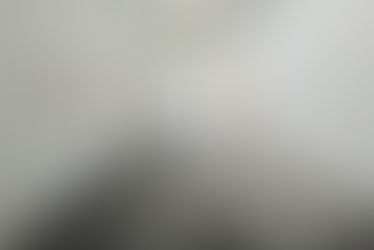Imran Qureshi, Where the Shadows are so Deep at the Barbican’s Curve Gallery
- The Courtauldian
- Jun 10, 2016
- 4 min read
The contemporary Pakistani artist Imran Qureshi describes his own work as a creative impulse to “paint the process of miniature painting”, a practice found in the royal courts of Delhi at least five centuries ago. The artist’s most recent solo-exhibition, ‘Where the Shadows are so Deep’, at the Barbican’s Curve Gallery (18 February – 10 July 2016) calls attention to this artistic endeavor. Traditionally, miniature painting is known to be an art of mimicry, not an outcome of original creativity. Qureshi, however, has been described as a “master miniaturist” with “bigger things on his mind”.
Transforming the Curve into a darkened, mausoleum-like space, Qureshi’s miniatures appear dazzlingly illuminated and variably dispersed across the gallery. Remarkable in its quiet beauty, the exhibition shows the artist’s ability to think architecturally as well as painterly. Barbican’s commissioning is significant not only because it accommodates for Qureshi’s more recent explorations into site-specific works, but because it justly promotes a non-European artist into the realm of contemporary art.
It would be wrong to regard Qureshi’s work as merely a “refresh” of the sixteenth-century Mughal genre of painting. Rather, his equally daring and enchanting works deconstruct the practice of miniature painting, making way for the artist’s own personal touch as well as taking on a new kind of political symbolism. Qureshi’s works address the “historically recent” formation of the state of Pakistan and its turbulent history. While Qureshi successfully captures the “essence” of the Indo-Turko-Iranian miniature style, (paying homage to his own heritage), his priority is to challenge the essential characteristics of the genre.
Qureshi is not alone in the contemporary revival of miniature painting. Along with US-based Shahzia Sikander and the Singh Twins of London, he is at the forefront of this renaissance. Since Britain’s colonial ruling of India the genre had been in decline. Now works such as ‘EnTWINed’ (2009) by the Singh Twins, which is featured in Tate Britain’s exhibition ‘Artist and Empire’ (2016), offers a rebooting of the former genre that acknowledges a wider 21st century audience. Qureshi is one of a group of younger artists with Pakistani heritage to add his voice to this new postcolonial discursive space – Sikander and the Singh twins being part of this chorus. Their work will be featured in this year’s Royal Academy Summer Show. Their aim is to adapt a cultural practice once confined to the opulent courts of the Mughals to the cultural hybridity of a contemporary globalized world.
In the 1990s Qureshi attended Lahore’s National College of Art, where he was introduced to the practice of miniature painting by his ‘ustad’, or, ‘master’ Bashir Ahmed. Today Qureshi is a professor of miniature painting at the same school, the only place in the world where the subject is formally taught and studied. Keeping to the authentic Mughal tradition, the practice of miniature painting is taught orally from ustad to shirgard (‘apprentice’), both sitting cross-legged on the floor for hours at a time.
Asked why he decided to specialize in miniature painting, Qureshi usually responds that it was the genre that “chose him”. For a long time he thought he lacked the “temperament” to become a miniature painter. But others spotted his talent. Technically difficult and demanding extraordinary self-discipline, miniature painting is a test to the ‘self’ of any artist. No coincidence, then, that Qureshi’s work has been described as a conflation of the personal and the political.
His miniatures allude to an inner conflict - the artist’s struggle to overcome the formulaic nature of the medium while challenging it directly. According to the Barbican’s curators – Eleanor Nairne and Luke Naessens - Qureshi’s last works were still being perfected a week before the exhibition’s opening. Evocations of the artist’s toil are visualized through the trace of smudged fingers and the spilt blood-red paint (Qureshi’s trademark) on the walls, frames and floor of the gallery space. Amusingly, on entering the exhibition space the viewer is uncertain where the artwork begins. Visitors awkwardly step around the decorative smatterings and smears of red-blood paint. Is Qureshi asking us to imagine that the miniatures are literally bleeding out of their frames? The artist’s self-portrait is at the centre of the Curve’s wall, serving as a guide along the visual journey. Squirrel-haired brush in hand, we see Qureshi’s striking profile at the heart of his creative feat.
The suggestion of violence in Qureshi’s miniatures extends further, and refers to the turbulent and agitated history of Pakistan. Qureshi admits that his turn towards artistic violence was significantly prompted after witnessing a terrorist attack in Lahore in 2014. Although Qureshi occasionally challenges such interpretations of his work: “I don’t want to work like a journalist and illustrate a political situation,” he told Apollo in 2014. He resists any flattening out of the intellectual depth of his practice. In general terms, the artistic return to miniature painting – most notably in Lahore – could be read as a questioning of the complicated relationship between the two countries that originally produced it: India and Pakistan. Qureshi’s tendency to repeatedly disrupt scenes of harmonious nature may allude to the violent partitioning of Pakistan and India in 1947. What ‘Where the Shadows are so Deep’ conveys is that the metaphors within Qureshi’s miniatures are “infinitely various” and open to interpretation. Formalist and political concerns are inextricably connected in his practice.
The Barbican’s own agenda to “push boundaries” (which makes it so respected by its supporters) renders it an appropriate venue for an artist like Qureshi, who formally and conceptually challenges those boundaries. Since 2006, the Curve initiative has attempted to give the spotlight to young contemporary artists who think outside the parameters of fine art. The meandering space of the Curve encourages viewers to read Qureshi’s installation as an epic narrative. The miniatures are not understood individually but collectively. The theme of ‘storytelling’ that was once a key component of miniatures from the sixteenth century is reintroduced by Qureshi. Rather than depict a narrative within, Qureshi’s miniatures merge with and break out onto the architecture in which they are contained. They seem to struggle against the space they are inhabited in. The energetic flourishes of red paint and the miraculous light that appears to emerge from inside the images themselves anthropomorphizes them. Qureshi’s implication is clear: the genre of the miniature is more alive now than ever.
Sources
‘Imran Qureshi: November Apollo’ Apollo Magazine, (Nov: 2014)
Laura Cumming, ‘Imran Qureshi review – a hauntingly beautiful show at the Ikon Gallery’, The
Guardian, (November: 2014)
Apollo Magazine (2014)
Cumming (2014)
Images from the exhibition can be found here: http://thisistomorrow.info/articles/imran-qureshi-where-the-shadows-are-so-deep












Comments